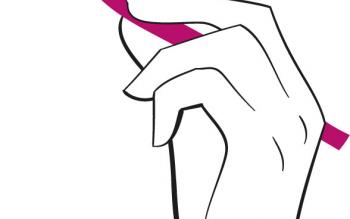Lead paragraph
The Affinity Diagram or Map tool helps designers to organize large amounts of data into their natural relationships. This tool calls for designers’ creativity and intuition. It was created in the 1960s by Japanese anthropologist Jiro Kawakita, and it is useful after doing Brainstorming or when designers have a large amount of verbal data to organize.
PREPARATION: up to 15 minutes
DESIGN PHASE: Insights
DURATION: 30-45 minutes
TEMPLATE OR GUIDELINES: no template needed
FACILITATORS: 1 per workshop
RESOURCES: Pens, Post-its, a large sheet of paper or large work surface (whiteboard, wall, table, or floor)
PARTICIPANTS: 3–30, design team, partners, community members, etc.
EXPECTED OUTCOME: Many ideas
An Affinity Map helps designers to shows the relationships between information, opinions, problems, solutions, and issues by placing them in related groups.
STEPS
1.START:
Define the focus of what you are interested in. Consider what you want to do with your findings (build personas, journey maps, system maps, etc.).
2.IDENTIFY:
Based on the selected focus area, define the criteria and select suitable groups of participants.
3.PREPARE:
Organize a meeting with the selected participants, prepare the room, and gather the necessary resources, supplies and data collected to create the Affinity Map. Think about what expectations will be set up-front, how you will start and end the workshop, and how much time participants are expected to dedicate to this activity.
4.CONDUCT:
Record each piece of data with a marking pen on a separate Post-it or card. Randomly spread notes on a large work surface (table or wall) so all notes are visible to everyone. The entire team gathers around the notes and conduct the following 4 actions.
1. In silence, look for data that seem to be related in some way. Place them side by side. Repeat until all notes are grouped. It’s okay to have ‘loners’ that don’t seem to fit a group. If a note seems to belong in two groups, make a second note.
2. Participants can discuss the shape of the map and surprising patterns. A few changes may be made, and when all notes are grouped, select a heading for each group.
3. See if the groups can be combined with larger entities and create “super-groups/headers”.
4. Ventilate: Break groups you have created and create new ones.
New ideas/insights often emerge while creating Affinity Maps. Write these to new post-its (different colour) and attach to the large work surface.
5.REPORT:
Make a short summary that includes your key findings and examples from the data that exemplify these.

